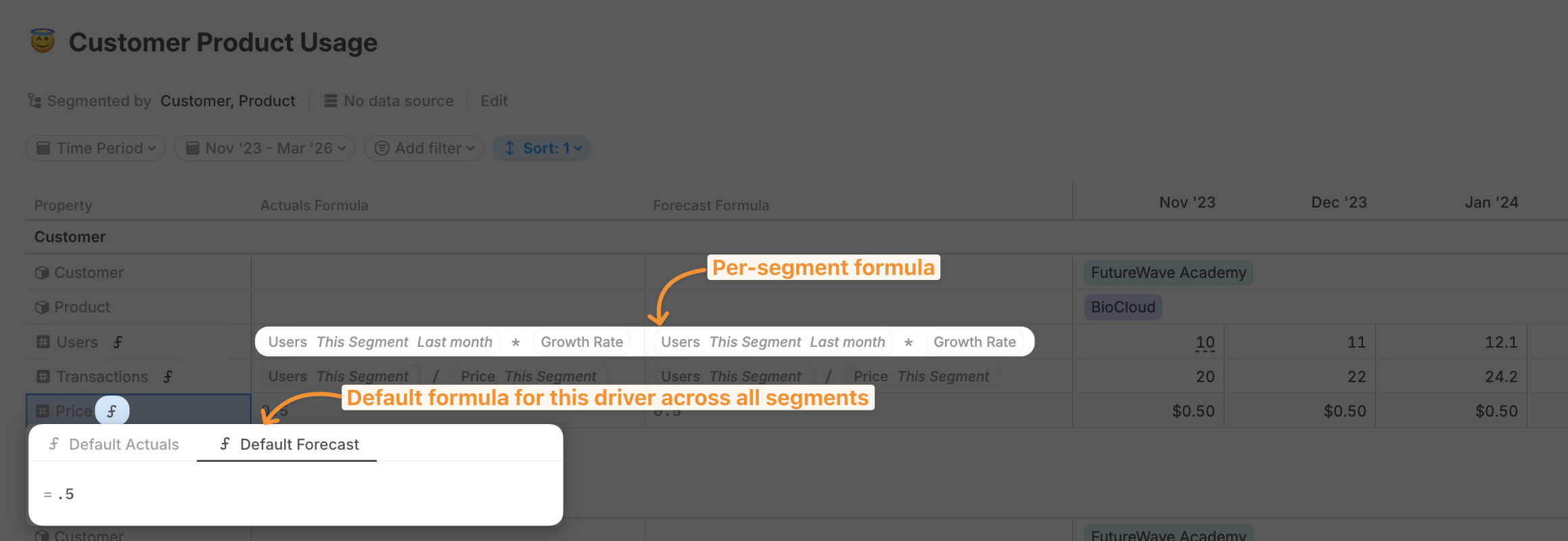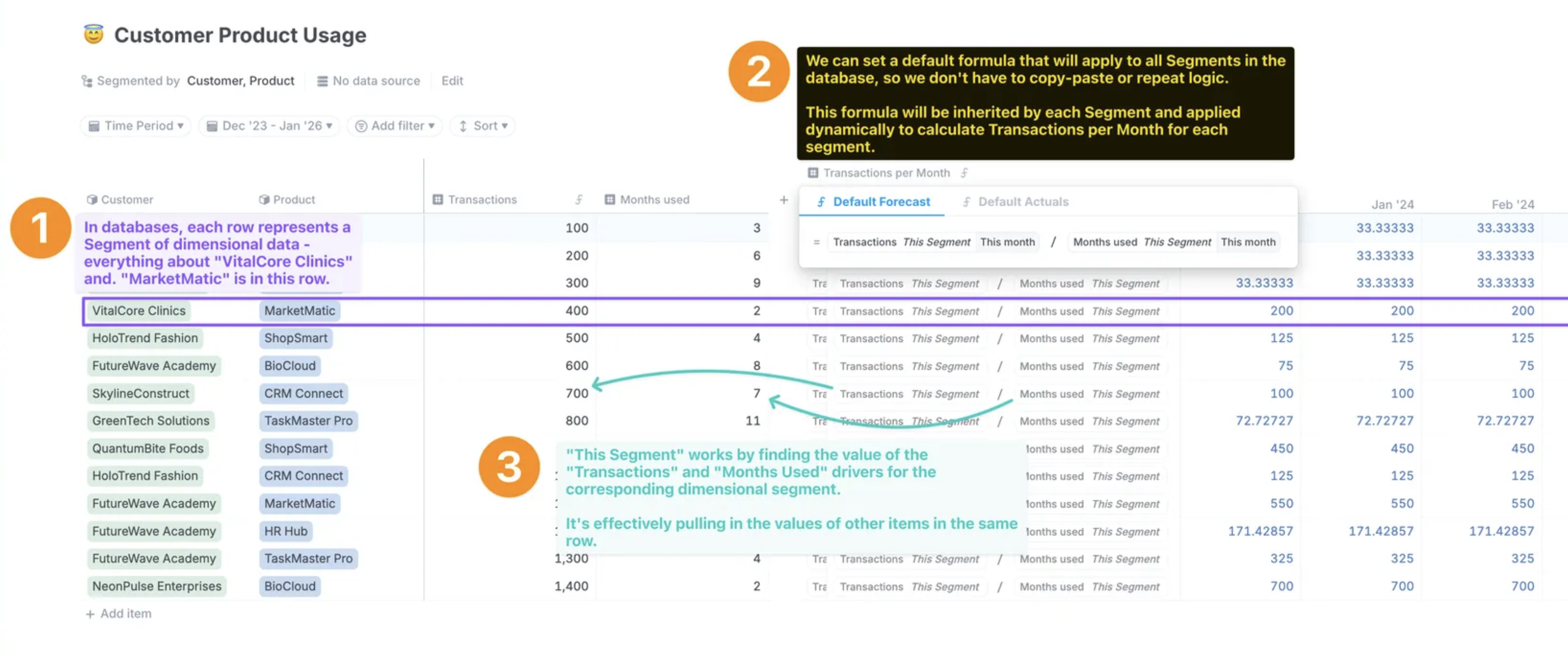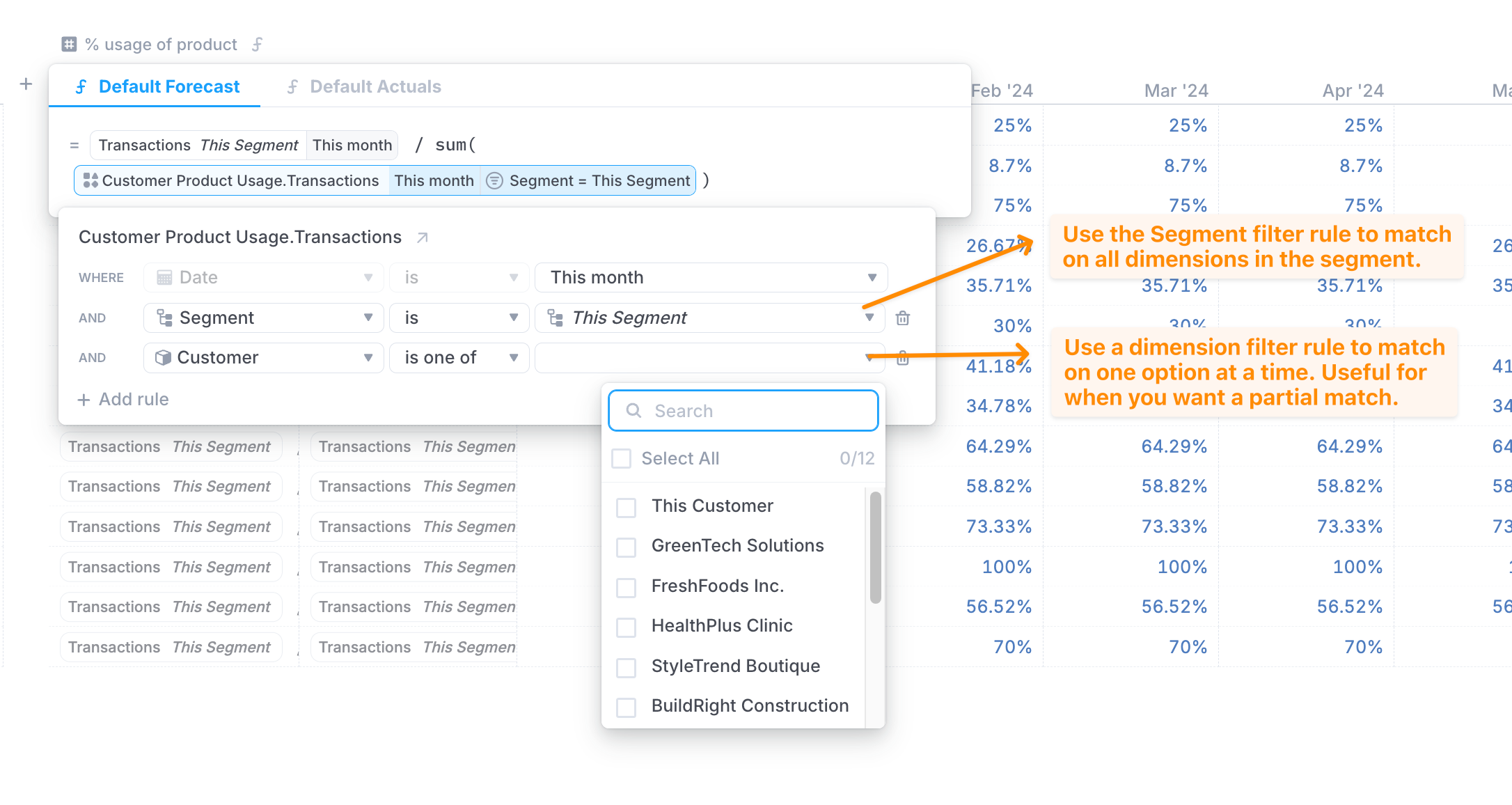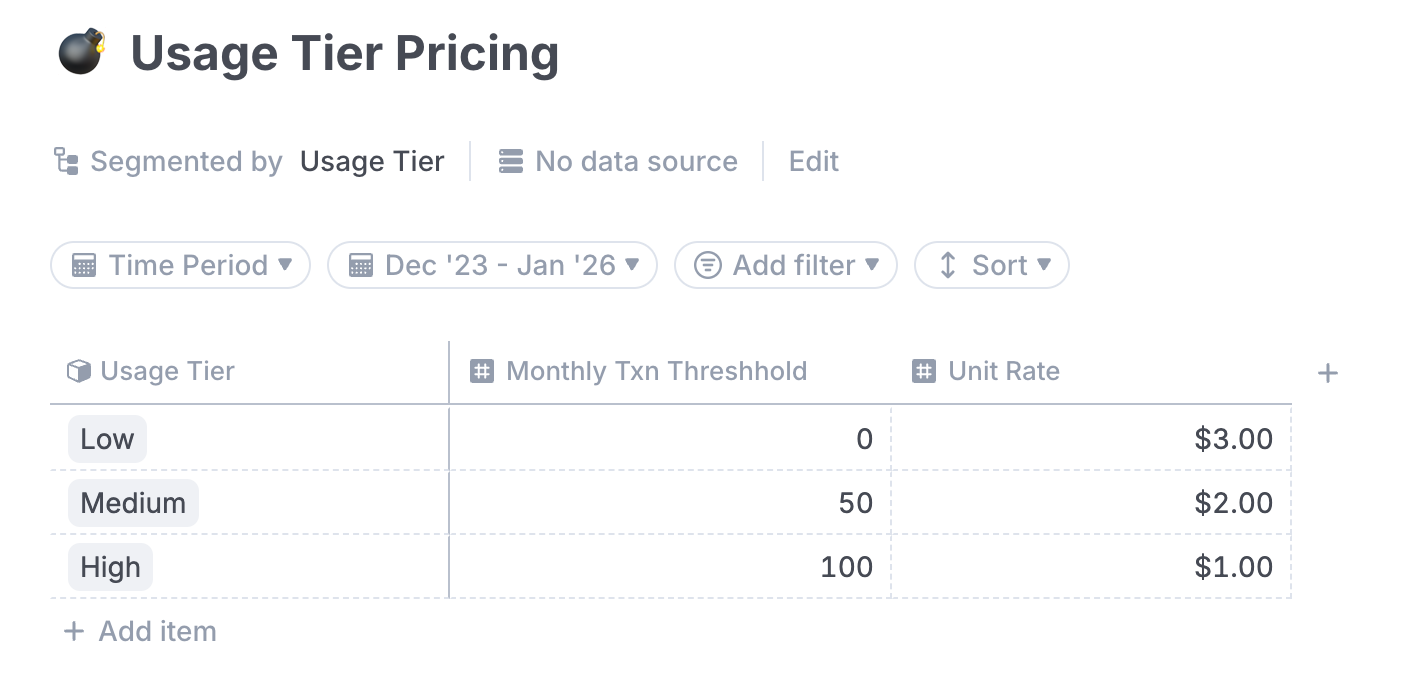Skip to main contentFor guidance on mapping values using dimensions (i.e., lookups), see this article.
- Setting default formulas across a column can save a lot of time—both when you have many drivers that should follow the same logic, and when new segments are added to the database. Any new segment will automatically inherit the default formula unless it’s explicitly overridden.
- In databases, each driver column can have a default formula, and any individual row (i.e., specific segmented driver) can override it. To revert to the default, just backspace or clear the custom formula.
- Inherited formulas are shown in a lighter style to indicate they’re coming from the default.
To make modeling at scale simple—while keeping it easy to override when needed—Runway applies smart defaults to fill in missing formulas.
When editing a formula, you can hover over the formula editor to see where the value is being inherited from.
Runway follows a clear set of rules to determine how formulas are inherited and overridden.
Runway applies the actuals formula using the following order of precedence:
- An explicitly set actuals formula for the driver
- A default actuals formula set at the column level in the database
- If no actuals formula is available, the driver falls back to its forecast formula
Similarly, forecast formulas follow this order of precedence:
- An explicitly set forecast formula for the driver
- A default forecast formula set at the column level in the database
- If none is set, Runway uses the global default formula:
self * last month
For example, if only a forecast formula is set at the column level, every driver in that column will automatically inherit that formula—unless an override is applied.
In highly dimensional models, when you want to apply similar logic across many segments (like forecasting product usage or modeling revenue per customer), you can use This Segment to write formulas that scale.
- This Segment refers to other data that shares some or all of the same dimensional attributes as the driver you’re writing the formula for.
- It allows you to write a single formula that dynamically adjusts based on the segment it’s applied to—helping you avoid repetitive formulas and reduce the chance of errors.
- While most commonly used within the same database, This Segment also works across different databases.
- You can also use dimension filters inside This Segment to fine-tune the match—for example, matching on just one shared dimension if that’s all that’s needed.
Let’s walk through some common use cases where This Segment helps scale your modeling logic and keep things simple.
When chaining formulas together in databases, the Timeseries view is a great way to see how logic flows across multiple drivers. You’ll be able to view all default formulas side by side, and edit them directly by clicking the ƒ icon for each driver to see how changes propagate.You can switch to this view via: Customize → View as → Timeseries.
\

Example: Dynamic filters using dimensions
Sometimes, you may want to filter based on partial match with a segment—for example, matching on a single dimension rather than all of them. With This Segment, you can apply dynamic filters across all dimensions or a subset of them, directly from the filter menu.
Let’s walk through an example: you want to calculate what percentage of each product’s usage is consumed by each customer.
In the filter menu:
- If you want to match across all the dimensions in the segment (e.g. match on Customer Name + Product), you can use the Segment filter.
- To apply the dynamic filters for specific dimensions, you can select the relevant dimension and then use the **This <dimension name> **option.
When choosing what to filter:
- Selecting a formula pill with the database name and icon lets you filter on any column in that database.
- Selecting a formula pill with just the driver name limits you to filtering on columns the driver is segmented by.

Example: Dynamic filters using driver values
Numeric drivers
There’s one more powerful use case for This Segment—using it to dynamically match on driver values, not just dimensions. This allows you to reference a value from one driver based on the value of another, similar to VLOOKUP() in Excel—but more robust.
Let’s walk through an example. You want to charge customers different unit prices based on their usage tier thresholds.
Imagine you have a database of usage tiers with associated unit prices, and you’re trying to calculate how much to charge each customer.
 To perform this match, we can simply apply a formula that multiplies:
To perform this match, we can simply apply a formula that multiplies: each customers # transactions * unit price for their usage tier
You can then use This Segment in the filter menu to dynamically select the correct unit price for each customer based on their usage level.
Date drivers
You can also use This Segment to dynamically filter based on date driver values—a powerful technique often used in cohort or revenue recognition models.
When filtering a database by a date column, you’ll see the option to use <date driver value> as the filter value. This allows you to reference dates from your model—such as contract start dates, signup dates, or feature release dates.
To apply this dynamically for each segment, use This Segment when selecting the date driver. That way, each segment uses its own corresponding date to filter the data.



